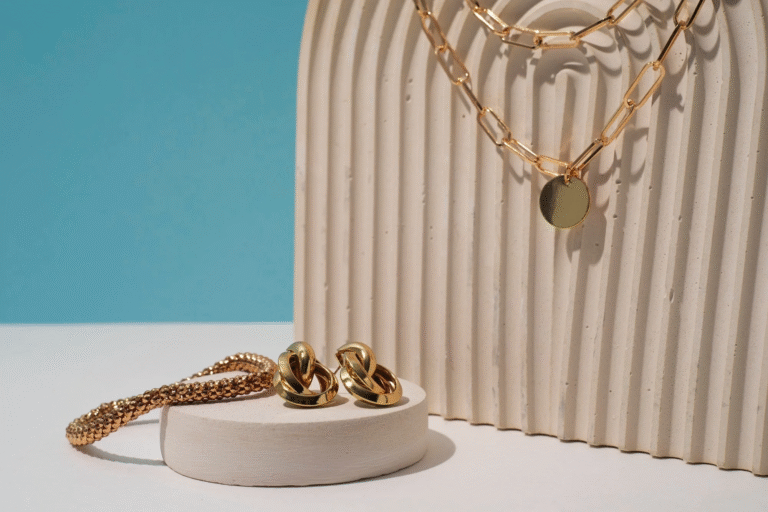The production of a personalized piece of jewelry is an appealing story of evolution. One starts with a momentary inspiration–a sketch on a napkin, a memory, a yearning at something strictly individual–and ends with the very visible shimmer of a completed thing. It is an elaborate dance between art and science that is facilitated by a tight work relationship with expert manufacturers of custom jewelry. Taking a look behind the scenes of every single step that goes into production de-mystifies the process and better appreciates the craftsmanship it takes to transform a unique vision into life.
One step leads to another with checks and balances to make sure that the end product is structurally sound, aesthetically flawless and is as close to the original idea as possible. Whether it is the preliminary conversation to the ultimate finish, the journey between sketch and sparkle is a testament to the expertise, technology, and enthusiasm dedicated by the designer as well as by the custom jewelry makers who are their guides and craftsmen.
Design and Conception Phase
The preliminary interview and Innovative Discussion
The travel begins with a dialogue. You give your inspiration, sketches and ideas to the custom jewelry manufacturers. It is a joint brainstorming session in which the manufacturer gives feedback on viability, offers alternative ways of getting the required effect, and describes the various processes involved.
Technical 2D and 3D Computer Aided Design
In the majority of compositions nowadays, the drawing is converted into an exact digital prototype in the Computer-Aided Design (CAD) program. A CAD artist carefully creates the piece in three dimensions so that you can view it in any orientation, and examine the proportions as well as make amendments before any real materials are involved in the work. There is the master plan of production in the form of this digital model.
Prototyping The Wax Model
After the CAD design has been accepted, the design is forwarded to a 3D printer to generate a photopolymer or a wax resin model. You can pick up this physical prototype, and feel it fit in your hand and size and test it to feel comfortable in, and then consent to the precise shape and feel. This is a very important step that identifies any problems before proceeding to precious metals.
Selection and Sourcing of Material
At the same time materials are chosen and arranged. You will select the metal and karat (e.g. 14k yellow gold, platinum), and have approved any gemstones. These materials will be sourced by the manufacturer and in most cases, they will show you videos or pictures of the real gems so you can be satisfied with the color, clarity and cut presented.
The Production and Realization Phase
The Lost-Wax Casting Process
The ancient lost-wax technique of casting utilizes the approved wax model. It is put in a flask, and investment plaster is put around it, and then it is heated in an oven. The wax melts and a perfect negative pattern of the jewelry item remains. Molten metal is then centrifugal cast or vacuum-poured into this mold producing a raw metal version of your design.
Aftercasting and Assembly
The raw casting, which may be a tree when several pieces were cast together, is cut off and cleaned. Then this rude work is subjected to pre-finishing, or filing, sanding, and boring holes in it to receive the stones. In the case of the design consisting of more than one part, these parts are soldered by a jeweler at this step.
The Accurate Stone-Setting
The next person is a master setter. With the help of special equipment and microscopes, they carefully attach each gemstone there. Prong, bezel, pave, channel, and various other setting styles have different techniques and demand an enormous amount of skills in order to make sure that each stone is set and is aligned perfectly.
Last Finishing and Quality Inspection
The almost-complete object is then polished to the final finish, passing through the rough, medium, fine-polishing wheels, until it attains the luster-high shine, a low-satin, or a low-matte finish. Then it is ultrasonically washed. Lastly it is subjected to a stringent quality control test to see that the highest standards of craftsmanship have been met before it gets to you.
Conclusion
The process of transforming a mere sketch into a glittering completed object is an outstanding piece of creativity, technology and laborious handwork. Digital modeling, prototyping, casting, setting, and polishing are all important steps toward turning an abstract concept into a wearable piece of art. Knowing how this occurs, you start to appreciate better the skills of custom jewelry makers and the amazing process that your personal treasure goes through. This information is what makes the last moment of unveiling, the sparkle, that much more important and fulfilling.

